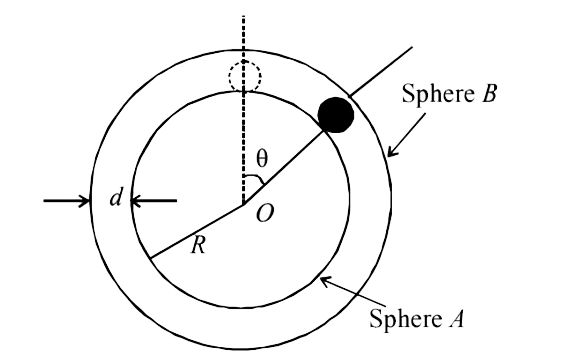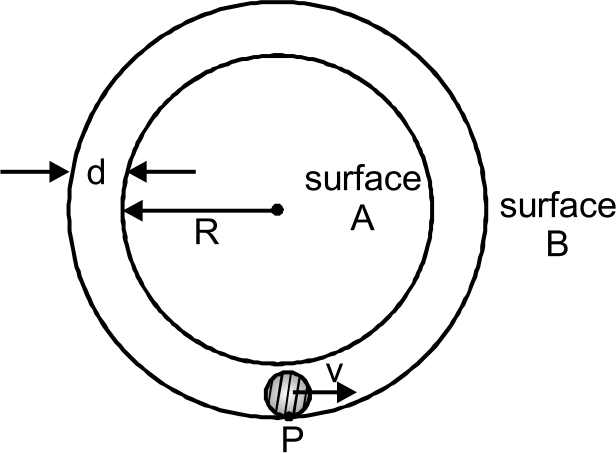(A)A horse cannot pull cart and run in empty space
( R) : The mutual action- reaction forces between the horse and cart get cancelled
Both (A) and (R) are true and (R) is the correct explanation of (A)
Both (A) and (R) are true and (R) is not the
(A) is true but ( R) is false
Both (A) and (R ) are false
The correct Answer is:B
To solve the question, we need to analyze the statements given and determine their validity based on the principles of physics, particularly Newton's laws of motion.
1. Understanding the Scenario:
- A horse is attached to a cart. When the horse tries to pull the cart, it exerts a force on the cart. According to Newton's third law, the cart exerts an equal and opposite force on the horse.
2. Action and Reaction Forces:
- The action force is the force exerted by the horse on the cart (let's call it Fhorse→cart).
- The reaction force is the force exerted by the cart on the horse (let's call it Fcart→horse).
- According to Newton's third law, these forces are equal in magnitude and opposite in direction: Fhorse→cart=−Fcart→horse.
3. Movement in Empty Space:
- In empty space, there is no frictional force acting on the horse. Friction is essential for the horse to push against the ground to gain forward motion.
- Without friction, the horse cannot exert a forward force on the ground, and hence cannot move forward to pull the cart.
4. Conclusion on the Statements:
- (A) The statement "A horse cannot pull cart and run in empty space" is true because the absence of friction means the horse cannot generate the necessary force to move.
- (R) The statement "The mutual action-reaction forces between the horse and cart get cancelled" is also true. However, this does not explain why the horse cannot pull the cart in empty space.
5. Final Evaluation:
- Both statements are true, but the reason (R) does not correctly explain the situation described in (A). The correct explanation is the absence of friction in empty space, which is crucial for the horse's movement.
Final Answer:
- (A) is true.
- (R) is true, but it does not provide the correct explanation for (A).
- A horse is attached to a cart. When the horse tries to pull the cart, it exerts a force on the cart. According to Newton's third law, the cart exerts an equal and opposite force on the horse.
- The action force is the force exerted by the horse on the cart (let's call it Fhorse→cart).
- The reaction force is the force exerted by the cart on the horse (let's call it Fcart→horse).
- According to Newton's third law, these forces are equal in magnitude and opposite in direction: Fhorse→cart=−Fcart→horse.
- In empty space, there is no frictional force acting on the horse. Friction is essential for the horse to push against the ground to gain forward motion.
- Without friction, the horse cannot exert a forward force on the ground, and hence cannot move forward to pull the cart.
- (A) The statement "A horse cannot pull cart and run in empty space" is true because the absence of friction means the horse cannot generate the necessary force to move.
- (R) The statement "The mutual action-reaction forces between the horse and cart get cancelled" is also true. However, this does not explain why the horse cannot pull the cart in empty space.
- Both statements are true, but the reason (R) does not correctly explain the situation described in (A). The correct explanation is the absence of friction in empty space, which is crucial for the horse's movement.
- (A) is true.
- (R) is true, but it does not provide the correct explanation for (A).
Similar Questions
Explain why a horse cannot pull a cart and run in empty space
View SolutionExplain why
(a) A horse cannot pull a cart and run in empty space.
(b) Passengers are thrown forward from their seats when a speeding bus stops suddenly.
(c ) A cricketer moves his hands backwards when holding a catch.
View SolutionExplain why
(a) A horse cannot pull a cart and run in empty space.
(b) Passengers are thrown forward from their seats when a speeding bus stops suddenly.
(c ) A cricketer moves his hands backwards when holding a catch.
View SolutionA horse has to pull a cart harder in the initial stange of his motion . Why ?
View SolutionA : The centripetal and centrifugal forces never cancel each other.
R : They are action and reaction forces.
View SolutionIf action is always equal to the reaction, explain how a horse can pull a cart.
View SolutionA 5 kg block is placed on the top of a 15 kg block as shown in figure . A horizontal force of 60 N is applied to the 15 kg block and the 5kg block is tied to the wall . The coefficient of friction between moving surfaces is 0.2

(a) Draw the free body diagram for each block w.r.t ground and identify the action reaction forces between two blocks .
(b) Determine the tension in the string and magnitude of the acceleration of the 15 kg block .
View SolutionA spherical balll of mass m is the highest point in the space between two fixed , concentic sphere A and B the smaller the two sphere A has a radius R and the space between the two spheres has a width d . The bell has a disneter very dightly less then d . All surface are frictionless . The bell is a given a gentle push (owards the right in the figure ) The upward vertical is denoted by θ (shown ijn the figure)

(a)Express the total normal reaction force exerted by the sphore on the as a finction of angle θ
(b) Let N_(A)andNBdenote in the magnitubes of the normal reaction force on the bell evered by the sphare A and B repectively Skech the variation of NAandN_(B)asfunctionsofcos theta ∈theran≥0 le theta le pi bydraw∈gtwoseparategraph∈youranswerb∞ktak∈gcos theta an the horizental axas.
View Solution"A horse has to pull a cart harder during the first few metres of its motion than later on ". Why ?
View SolutionA small spherical ball of mass m is projected from lowest point (point P) in the space between two fixed, concentric spheres A and B (see figure). The smaller sphere A has a radius R and the space between the two spheres has a width d. The ball has a diameter very slightly less than d. All surfaces are frictionless. Speed of ball at lowest point is v. NA and NB represent magnitudes of the normal reaction force on the ball exerted by the spheres A and B respectively. Match the value of v given in column–I with corresponding results in column–II.

View Solution
